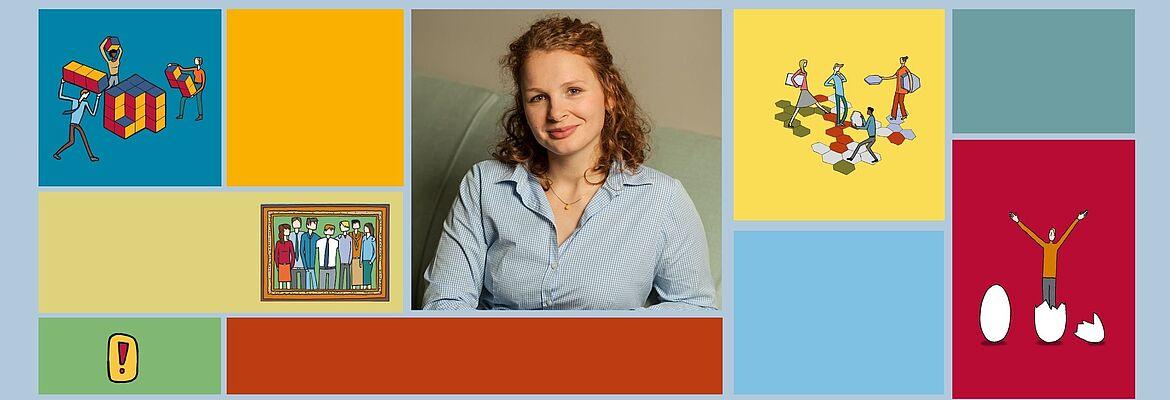Created by Anne-Marie Reinecker
Leading change – In search of the miracle cure

Change, transformation, transformation – these are the keywords in the subject line of most of the inquiries I currently find in my inbox. Companies everywhere are facing the transformation of an entire organizational unit, or managers are looking for a way for their team to get through an upcoming change as quickly and efficiently as possible. But the question is: how do you deal with this when it is clear that the resistance and uncertainties can be great?
In discussions with customers, I often hear people asking for a miracle cure, for the ONE way that will resolve resistance to change as quickly as possible and make everyone happy. “How do other companies do it?” I’m asked again and again and look into disappointed faces when I can’t provide a panacea and don’t really want to! After all, every approach to change is as individual as the specific situation and the organization itself in which it takes place. It is only human to hope for support and to want to build on tried and tested methods.
More “how” instead of miracle cures
Unfortunately, there is no one-size-fits-all solution or miracle cure for successfully supporting and implementing change processes. But there are a number of framework conditions and structures that make a difference and pave the way for the successful implementation of change in the best possible way for all employees.
There is one essential prerequisite: an open attitude towards all facets of the process. I experience time and again that there can be no successful change without this attitude. It is about HOW the management and executives approach the change and HOW the emotions of all those affected in the company are dealt with. Because as my colleague Susanne Stock makes clear in her column: emotions do not have to and cannot remain outside even during change! (See also: Wirtschaftsstandort Niederrhein, Winter 2019 issue) They are a central anchor point in any change, showing where each individual and the organization stands. They offer the opportunity not to follow a patent remedy, but to listen and look and act according to the needs of those involved.
So the question is: What expectations do we have of ourselves and of our employees during change? What attitude do we have towards employees who express their emotions?
Change is experienced differently by everyone.
What a person feels and how strong the emotions are depends on factors such as experience, personal involvement, expected benefits or individual skills. It is also impossible to predict the exact sequence of emotions from the moment when the need for change becomes apparent to the phase in which a person actively helps to shape the change. However, the “emotional stages” can be characterized well as a model. One model that is ideally suited to reflecting emotions in change is the House of Change. It was developed by Claes Janssen in the 1970s following extensive research.
The model describes four emotional phases that people go through when dealing with far-reaching changes: complacency, denial, uncertainty and renewal. How long the individual stays in each phase is highly individual. It is also a fact that each of these four phases and the associated emotions are necessary in order to be ready as an individual and therefore also as an organization to actively accept and help shape the change.
So if I approach my employees and myself with the attitude that emotions such as anger or fear, but also joy and enthusiasm, are normal and okay and that everyone is in the same boat, then I create the necessary framework that can serve as the basis for a successful change process. The House of model makes change more tangible, allows emotions to be expressed and takes a lot of pressure off managers. It makes it easier to address uncertainties. The model offers managers and employees the opportunity to move out of immobility and into reflection:
- “Where do I stand emotionally with regard to the change?”,
- “What support do I need?”
- “Where does every single one of my employees stand?”
- “What is the maximum I can expect from them right now?”
- “What can I do to support them?”
The miracle cure
So if you are looking for a miracle cure for dealing with change processes, you will find it in yourself and in the willingness to consciously question your own attitude and that of the organization. This is sometimes uncomfortable, but extremely effective. Take a model such as the House of Change and consciously look at where you and your employees currently stand and what a realistic next step could be for your team. And in the end, you will find what really matters: your individual path. As individual as your organization and your employees – to suit the solution to your challenges.
This article also appeared in the magazine Wirtschaftsstandort Mönchengladbach
Author

Anne-Marie Reinecker
Managing Director




